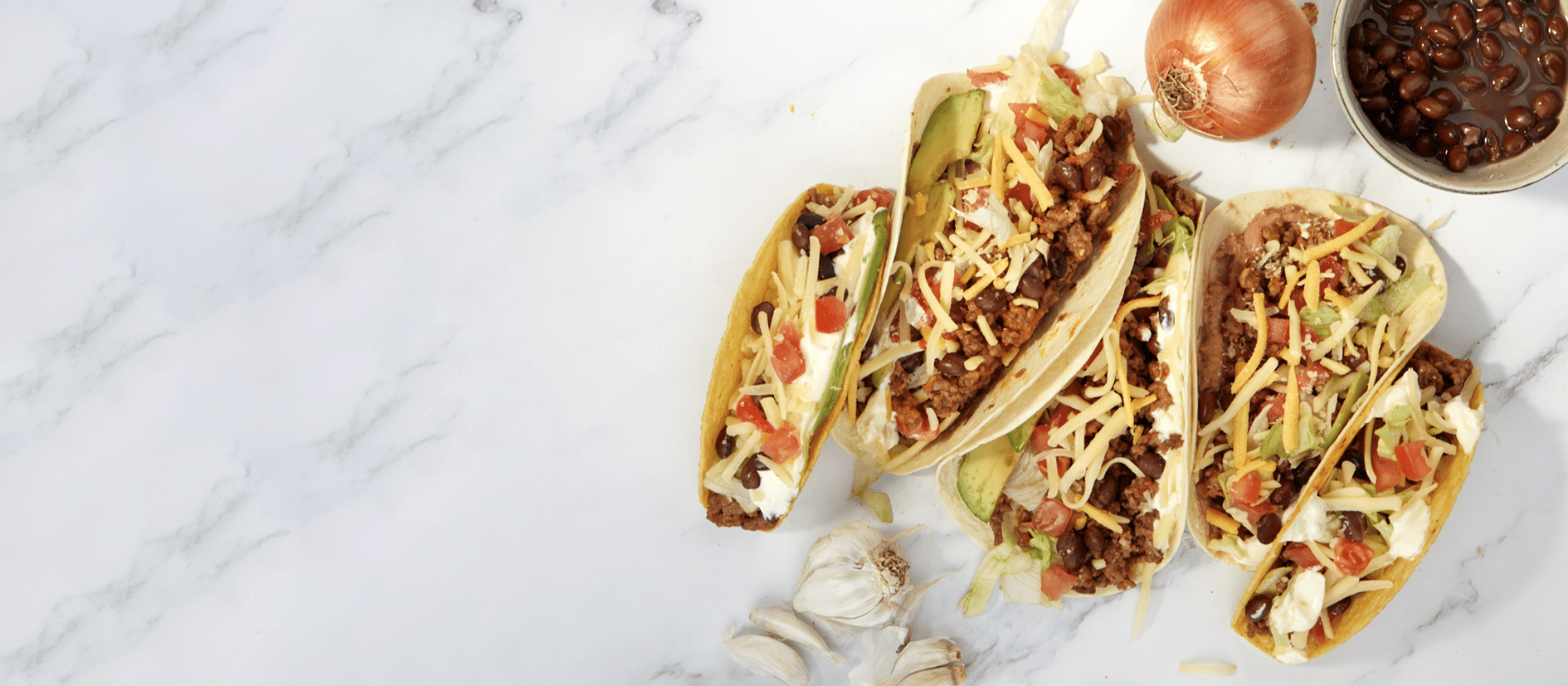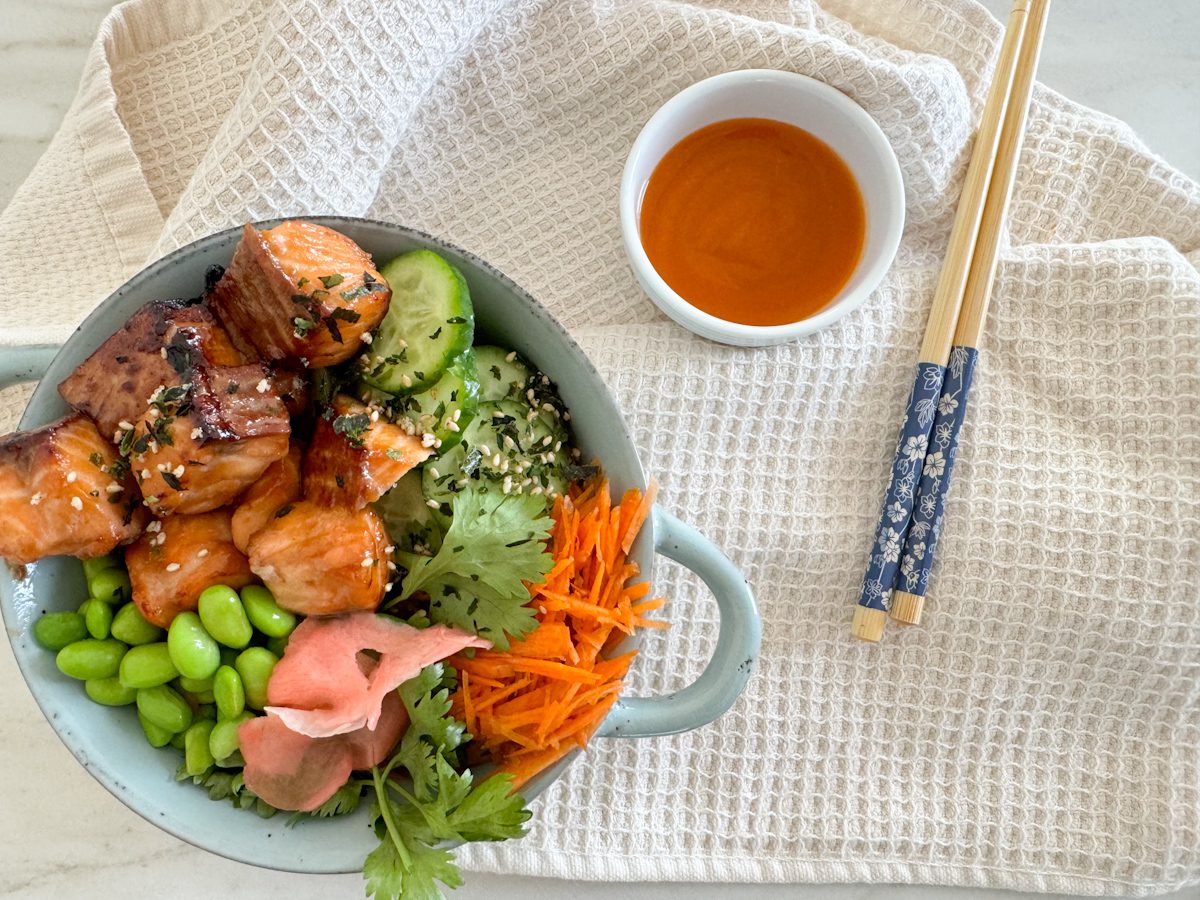High-protein foods are those that contain a significant amount of protein per serving. They play an essential role, aiding in muscle repair, growth, and overall recovery after intense workouts. Protein is the building block of muscles, making it a crucial nutrient for anyone looking to achieve their health and wellness goals.
In this article, we will share the top 8 high-protein foods every health enthusiast should include in their diet. These recommendations come backed by a nutritionist to ensure you get the most accurate and beneficial advice.
It’s worth noting that while protein is vital, it’s equally important to maintain a diverse nutrient intake. A balanced diet ensures that you receive all necessary vitamins and minerals, promoting overall health and preventing nutritional deficiencies. So, as you explore these high-protein foods, remember to keep your meal plans well-rounded by incorporating other nutrient-rich options into your routine.
Now let’s dive into the top 8 high-protein foods that can fit seamlessly into your meal plans while providing the necessary nutrients for your fitness journey.
Table of Contents
Lean Beef
Lean beef is a top choice due to its rich nutritional profile and muscle-building properties. This high-quality protein source supports muscle repair and growth, making it an essential component of any health-focused diet.
Nutritional Benefits
- High-Quality Protein: Lean beef is packed with high-quality protein, which is crucial for muscle recovery and growth.
- Zinc: Important for immune function and metabolism, zinc also aids in muscle repair.
- Iron: Essential for oxygen transport in the blood, iron helps maintain energy levels and overall vitality.
Recipe Ideas
Including lean beef in your meals can be both delicious and nutritious. Here are some healthy recipe ideas:
- Grilled Beef Salad: Combine lean beef strips with mixed greens, cherry tomatoes, avocado, and a light vinaigrette.
- Beef Stir-Fry: Sauté lean beef with colourful vegetables like capsicum, broccoli, and carrots. Add soy sauce and ginger for flavour.
- Lean Beef Tacos: Use whole-grain tortillas and fill them with seasoned lean beef, black beans, shredded lettuce, avocado, sour cream and salsa.
Incorporating lean beef into your diet not only enhances your protein intake but also ensures you get vital nutrients like zinc and iron for optimal health and performance.

Chicken
Chicken is a favourite choice for health enthusiasts because it’s lean and versatile. It’s packed with protein and low in fat, making it perfect for building muscle without consuming too many calories.
Nutritional Benefits
- Protein Powerhouse: 90 grams of chicken breast provides about 20 grams of high-quality protein.
- Low in Fat: Opting for skinless chicken breast ensures minimal fat intake while maximising protein consumption.
Versatile Cooking Methods
To keep chicken healthy yet tasty, here are some cooking methods you can try:
- Grilling: Adds a smoky flavour without adding extra fats.
- Baking: Retains moisture and allows for different seasonings.
- Poaching: Keeps the chicken tender and is ideal for shredding into salads or wraps.
For those who enjoy meal prepping, check out this guide on how to meal prep like a pro for some insightful tips.
Post-Workout Chicken Recipe
A balanced post-workout meal should include both protein and complex carbohydrates. Here’s a quick and delicious recipe:
Ingredients:
- 120g Chicken Breast (weighed raw)
- 70g Pasta Fibre Penne (weighed dry)
- 2 tsp Mexican Spice Mix
- 40g Greek Style Natural Yoghurt
- 50g Tomato Salsa
- 30g Canned Corn Kernels
- 30g Canned Black Beans (drained weight)
- 30g Light Shredded Mozzarella
- 20g Avocado
- 10mL Lemon Juice
- 2g Fresh Coriander
Method:
- Cook pasta as per packet instructions. Drain and set aside.
- Preheat the oven to 180°C. Dice chicken breast and season with salt and pepper. Cook the chicken in a pan until cooked through.
- Mix the salsa, seasoning, yoghurt, corn, black beans, pasta, and chicken in a bowl. Add half of the mixture to an oven-proof dish. Top with half the cheese and the remaining chicken mixture. Sprinkle the remaining cheese on top.
- Bake in the oven for 10 minutes or until the cheese is melted and golden. Top with diced avocado and coriander.
This meal not only replenishes your muscles with protein but also provides essential nutrients from vegetables. For seasonal vegetable options, visit this guide on what’s in season this winter.

Salmon
Salmon is a favourite due to its substantial amount of protein and healthy fats. Beyond its high protein content, salmon boasts an impressive array of nutritional benefits.
Benefits of Salmon:
- Rich in Omega-3 Fatty Acids: These healthy fats are known for promoting heart health and reducing inflammation, making salmon a powerhouse for your overall well-being.
- High-Quality Protein Source: Each serving provides a significant boost to muscle repair and growth, which is crucial for anyone engaged in regular physical activity.
- Packed with Essential Nutrients: Salmon is also a good source of vitamin D, B vitamins, and selenium, all of which contribute to optimal bodily functions.
Choosing the Right Salmon:
When selecting salmon, opt for wild-caught varieties. Wild-caught salmon not only has superior nutritional value but is also more sustainable than farmed options. This choice supports better ecological practices while offering you higher levels of omega-3s and fewer contaminants.
Recipe Recommendation:
For a tasty and nutritious meal, try this simple yet delicious dish:
Smoked Salmon & Feta Omelette on Toast
Ingredients:
- 2 Slices Wholemeal Bread
- 2 Large Eggs
- 20g Baby Spinach
- 50g Smoked Salmon
- 20g Feta Cheese
Instructions:
- Whisk eggs in a bowl and season with salt, pepper and chilli flakes (optional).
- Saute vegetables in a non-stick pan. Once vegetables begin to wilt, pour the eggs into the pan and cook for 2 minutes or until the eggs begin to set.
- Add smoked salmon and cheese to the centre of the omelette, then flip and continue to cook for another 2 minutes. Serve with toast.
This meal not only provides a substantial amount of protein but includes a variety of vitamins and minerals essential for maintaining energy levels and overall health. If you’re looking for more easy dinner recipes that are both delicious and nutritious, you might find these “5 Easy Dinner Recipes For The Whole Family!” helpful.
Eggs
Eggs are a convenient way to consume protein, making them a go-to option for many health enthusiasts. They are packed with high-quality protein and essential amino acids, which are important for repairing and building muscles.
Nutritional Benefits of Eggs
- High-Quality Protein: Eggs contain one of the highest quality proteins available, which means your body can use it very efficiently.
- Essential Amino Acids: All nine essential amino acids are present in eggs, supporting overall muscle recovery and health.
Addressing Cholesterol Concerns
Some people worry about the cholesterol levels in eggs. However, current research suggests that moderate egg consumption does not increase the risk of heart disease for most individuals. It’s always best to consult with a healthcare provider to get personalised advice.
Quick and Easy Egg-Based Meals
For busy days, having quick egg recipes on hand is invaluable:
- Egg Muffins: Whisk eggs with spinach, capsicum, ham and a sprinkle of cheese. Pour into muffin tins and bake at 190°C for 20 minutes.
- Scrambled Eggs with Veggies: Sauté your favourite veggies like tomatoes, spinach, and mushrooms. Add beaten eggs and stir until cooked.
Incorporating egg-based meals into your routine not only provides variety but also ensures you meet your protein needs efficiently.
Greek Yoghurt
Greek yogurt is a popular choice for getting protein among health enthusiasts. It has a smooth texture and thick consistency that makes it satisfying to eat, and it also contains live cultures that are good for your gut.
What Makes Greek Yoghurt Special
- Lots of Protein: Greek yoghurt has almost double the amount of protein compared to regular yoghurt, which makes it great for repairing and building muscles. This is especially beneficial when consumed as part of a pre-workout meal that aims to maximise muscle growth.
- Good Bacteria: The live cultures in Greek yoghurt help keep your gut healthy by improving digestion and strengthening your immune system.
Why Choose Plain Greek Yoghurt
Plain Greek yogurt is a healthier option because it doesn’t have any added sugars. Here are some ways you can make it taste better naturally:
- Add fresh fruits like berries or banana slices.
- Mix in a tablespoon of honey or maple syrup.
- Sprinkle nuts or seeds on top for extra crunch and nutrients.
Recipe: Protein-Packed Smoothie Bowl
A tasty idea for using Greek yoghurt in your meals is to make a smoothie bowl. Here’s a simple recipe you can try:
Ingredients:
- 1 cup plain Greek yogurt
- 1 banana
- 1/2 cup frozen berries
- 1 tablespoon chia seeds
- 1/4 cup granola
- A drizzle of honey (optional)
Instructions:
- Blend the Greek yoghurt, banana, and frozen berries until smooth.
- Pour the mixture into a bowl.
- Top with chia seeds, granola, and a drizzle of honey if desired.
This smoothie bowl not only tastes delicious but also provides a good balance of protein, fibre, and healthy fats that will give you energy for your workouts.
By adding Greek yoghurt to your diet, you can enjoy its creamy texture and many health benefits while still working towards your fitness goals.
Quinoa
Quinoa is a standout grain, especially for health enthusiasts, due to its unique nutritional profile. Unlike many other grains, quinoa provides all nine essential amino acids, making it a complete plant-based protein. This characteristic makes quinoa an excellent choice for those following vegetarian or vegan diets.
The fibre content in quinoa is another significant benefit. High in dietary fibre, quinoa helps promote satiety and supports digestive health. Incorporating quinoa into your meals can help you feel fuller for longer and maintain a healthy digestive system.
Savoury Quinoa Salad Recipe
For a nutritious and delicious meal, try this savoury quinoa salad that not only delivers a substantial amount of protein but also offers a refreshing mix of flavours and textures:
Ingredients:
- 1 cup cooked quinoa
- 1 cup mixed vegetables (e.g., bell peppers, cucumbers, cherry tomatoes)
- 1/4 cup chopped fresh herbs (e.g., parsley, cilantro)
- 1/2 cup chickpeas
- 2 tablespoons olive oil
- Juice of one lemon
- Salt and pepper to taste
Instructions:
- Cook the quinoa according to package instructions and let it cool.
- In a large bowl, combine the cooked quinoa with mixed vegetables, fresh herbs, and chickpeas.
- Drizzle with olive oil and lemon juice.
- Season with salt and pepper to taste.
- Toss everything together until well combined.
- Serve chilled or at room temperature.
This savoury salad not only delivers a substantial amount of protein but also offers a refreshing mix of flavours and textures that can keep your meals exciting.
Eating balanced meals with nutrient-dense ingredients helps support an active lifestyle and long-term health goals. If you’re interested in understanding more about macronutrients like protein and how they contribute to your fitness journey, consider checking out this informative blog post on understanding macronutrients.
Edamame: A Protein-Packed Snack for Health Enthusiasts
Edamame, also known as young soybeans, is an excellent choice for anyone who wants to add more protein to their diet. This plant-based snack is not only rich in protein but also a great source of iron, making it perfect for those who want to increase their nutrient intake without relying on animal products.
Why You Should Include Edamame in Your Diet
Here are some key benefits of adding edamame to your meals:
- High Protein Content
Edamame is a powerhouse when it comes to protein. With around 12 grams of protein per 100g, it’s an impressive option for those following a plant-based diet, looking to reduce their meat consumption or add more protein to their meals.
- Rich in Iron
Iron is essential for maintaining energy levels and overall health, especially for active individuals. Edamame provides a good amount of plant-based iron, helping you meet your daily requirements without relying solely on meat sources.
- Low in Calories
If you’re watching your calorie intake, edamame can be a great choice. Despite its high protein content, it’s relatively low in calories compared to other snacks. This means you can enjoy a satisfying portion without worrying too much about exceeding your calorie goals.
How to Incorporate Edamame into Your Meals
One of the best things about edamame is its versatility. Here are some simple yet delicious ways to include it in your meals:
- Stir-Fries: Add shelled edamame to your favourite stir-fry recipes for an extra protein boost.
- Grain Bowls: Toss edamame into grain bowls featuring quinoa or brown rice, along with vegetables and a lean protein source like chicken or tofu.
- Salads: Sprinkle edamame over salads for added texture and nutritional value.
A Tasty Way to Enjoy Roasted Edamame
If you’re in the mood for a crunchy snack, try making roasted edamame with this easy recipe:
- Preheat the oven to 200°C.
- Spread frozen edamame on a baking sheet.
- Drizzle with olive oil and sprinkle with sea salt, garlic powder, and a pinch of chilli flakes.
- Roast for 20 minutes until crispy.
This savoury treat not only satisfies your taste buds but also keeps you fueled throughout your workouts.
Looking for more personalised meal ideas? equ, a team of experienced nutritionists and dietitians, can provide you with delicious meal plans tailored to your fitness goals. Their expert guidance ensures you never have to compromise on flavour or nutrition.

Chickpeas
Chickpeas are a popular choice for many health enthusiasts due to their high protein content. They are considered versatile legumes and can be used in various dishes from different cuisines around the world.
Culinary Versatility
Chickpeas can be prepared in several ways:
- Blended into creamy hommus: This makes for a tasty dip or spread that is both protein-packed and flavourful.
- Tossed in salads: Adding chickpeas to your salads not only provides a satisfying crunch but also boosts the nutritional value.
- Cooked into stews and curries: Chickpeas work well in hearty dishes, lending thickness and depth of flavour.
By incorporating chickpeas into your meals, you can enjoy a wide range of flavours while ensuring that you get your protein fix.
Homemade Roasted Chickpeas
If you’re looking for a healthier alternative to processed snacks, try making your own roasted chickpeas at home. It’s simple:
- Rinse and drain canned chickpeas.
- Toss them with olive oil, salt, and your choice of spices.
- Roast them in the oven at 200°C for 20-30 minutes until they turn crispy.
These crunchy treats are not only delicious but also provide a convenient way to increase your protein intake.
Balanced Diet Approach
While chickpeas are indeed a good source of protein, it’s important to remember that variety is key when it comes to nutrition. Including other high-protein foods in your diet ensures that you receive a wide range of nutrients necessary for overall health and fitness.
To further enhance your balanced diet approach, consider using helpful tools such as equ’s Calorie and Food Tracker App which can aid you in managing your calorie intake and finding healthy recipes.
Make the most of chickpeas’ versatility by incorporating them into your diet and enjoying nutritious meals that align with your fitness goals.
Protein Consumption Guidelines for Health Enthusiasts
When it comes to protein consumption, health enthusiasts need to understand that the recommended amount can vary. Factors such as activity level, fitness goals, and daily caloric needs all come into play when determining protein intake. Generally, individuals who regularly engage in strength training or endurance exercises may require more protein than those with a less active lifestyle.
Balancing Animal and Plant Protein Sources
To ensure optimal muscle repair and growth, it’s important to obtain a diverse range of amino acids. This can be achieved by incorporating both animal and plant-based protein sources into your diet. By doing so, you not only fulfil your body’s amino acid requirements but also gain the various benefits associated with different types of food.
Animal protein sources include:
- Lean beef
- Chicken
- Salmon
- Eggs
- Greek yogurt
Plant protein sources include:
- Quinoa
- Edamame
- Chickpeas
Practical Tips for Incorporating High-Protein Foods
- Breakfast: Kickstart your day with a high-protein meal such as scrambled eggs or a bowl of Greek yoghurt topped with fresh fruit.
- Snacks: Keep protein-rich snacks like roasted edamame or a handful of nuts readily available for quick energy boosts.
- Lunch: Make sure to incorporate lean proteins like chicken breast or quinoa salad into your midday meal.
- Dinner: Opt for dishes such as salmon paired with steamed vegetables or a flavorful lean beef stir-fry.
- Post-Workout: Refuel your muscles with a delicious smoothie made from Greek yoghurt and mixed berries.
By following these guidelines, you can ensure that you’re consuming adequate amounts of protein to support your fitness goals while enjoying a wide variety of nutritious foods.
Conclusion
Embrace the variety of high-protein foods discussed in this article to keep your diet both nutritious and enjoyable:
- Lean Beef: Rich in proteins, zinc, and iron.
- Chicken: Versatile and lean.
- Salmon: Packed with omega-3 fatty acids.
- Eggs: High biological value protein.
- Greek Yoghurt: Probiotics for gut health.
- Quinoa: Complete vegetarian protein source.
- Edamame: Plant-based iron and protein.
- Chickpeas: Versatile in various cuisines.
Experiment with new recipes and find what works best for your tastes and fitness goals. Embrace the journey towards a healthier you by diversifying your protein sources and enjoying the process.

